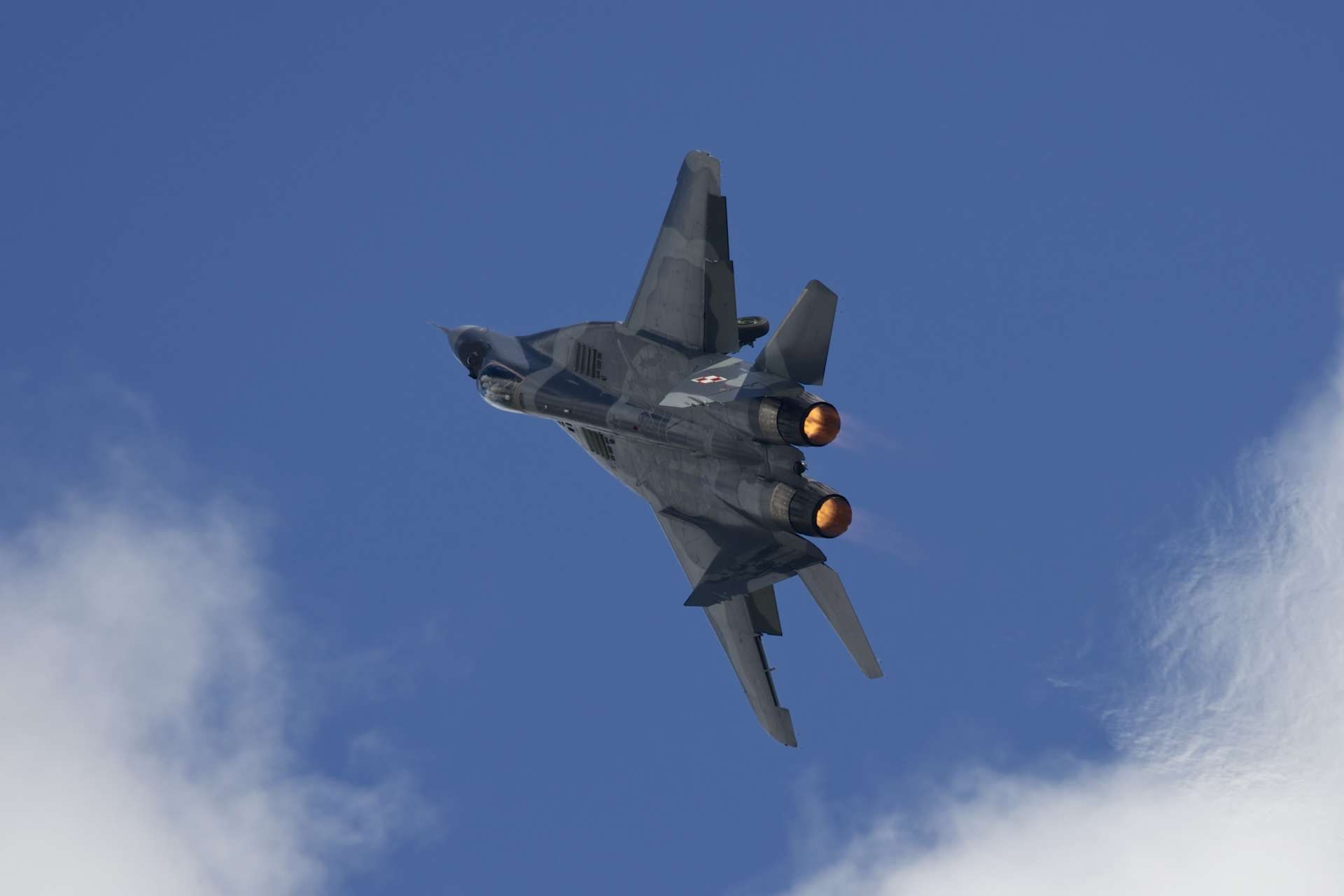Breaking News
Ukrainian Air Force Could Receive Polish MiG-29s as Conflict Intensifies.
As the conflict in Ukraine intensifies, Poland is considering donating its remaining MiG-29 fighter jets to enhance the Ukrainian Air Force. This potential support follows recent discussions between Ukrainian President Volodymyr Zelensky and Polish Prime Minister Donald Tusk in Warsaw, where a security agreement was signed, highlighting ongoing military cooperation between the two nations.
Follow Army Recognition on Google News at this link

The Polish Air Force acquired its fleet of MiG-29 fighters during the Cold War era, with the first aircraft entering service in 1989 (Picture source: HooLengSiong on Flickr)
The Polish government, led by Prime Minister Tusk, has expressed a willingness to provide about 15 MiG-29 aircraft to Ukraine. However, this transfer is contingent on NATO allies assisting in patrolling Polish airspace with their fighters until Poland can secure replacements for the donated MiGs. Tusk emphasized the necessity of this interim solution, noting that the MiGs are currently essential for Poland's air policing duties.
The urgency of this support is underscored by the heavy losses suffered by Ukraine in its air capabilities. Over a recent three-day period, Russian drone reconnaissance over Ukrainian airbases facilitated devastating Iskander ballistic missile strikes, resulting in the destruction of several Ukrainian jets, including MiG-29s. Analysts have noted that during 28 months of intense conflict, the Ukrainian Air Force has lost nearly half of its MiG-29 fleet, which initially numbered around 50 aircraft.
The donation of additional MiGs from Poland could significantly strengthen the Ukrainian Air Force, at least temporarily, as it awaits the arrival of more advanced fighters such as Lockheed Martin F-16s. The first batch of F-16s could reach Ukraine imminently, providing much-needed reinforcement to its air defense capabilities.
The Polish Air Force acquired its fleet of MiG-29 fighters during the Cold War era, with the first aircraft entering service in 1989. These Soviet-era jets were part of Poland's strategy to modernize its military capabilities amid the geopolitical tensions of the time. The acquisition included MiG-29A (single-seat) and MiG-29UB (two-seat) variants, enhancing the combat and training capabilities of the Polish forces. Over the years, Poland has gradually increased its fleet, which included acquiring additional MiG-29s from the Czech Republic and Germany, bringing the total to about 31 fighters according to the latest counts.
The MiG-29, known for its superior maneuverability and speed, has served as a cornerstone of Poland's air defense strategy. Equipped with advanced avionics for its time, the aircraft could effectively engage both aerial and ground targets, making it a versatile asset in Poland's military arsenal. It is armed with a mix of air-to-air missiles, air-to-ground munitions, and an internal cannon, providing substantial firepower. The aircraft's design focuses on enhancing its agility and combat effectiveness, characterized by its high thrust-to-weight ratio and aerodynamic structure.
However, the effectiveness of these reinforcements depends on Ukraine's ability to protect these assets on the ground. The increasing frequency of Russian drone activity and subsequent missile strikes on Ukrainian airbases highlight a critical vulnerability in Ukraine's current air defense structure. This issue has propelled the need for robust air defense systems to the forefront of discussions among NATO leaders, who are currently meeting in Washington, D.C., to address these strategic military needs.
The situation underscores a broader strategic dilemma faced by Ukraine and its allies: balancing the immediate benefits of enhancing aerial firepower with the imperative to establish durable air defenses to support these capabilities in the face of persistent threats.


























